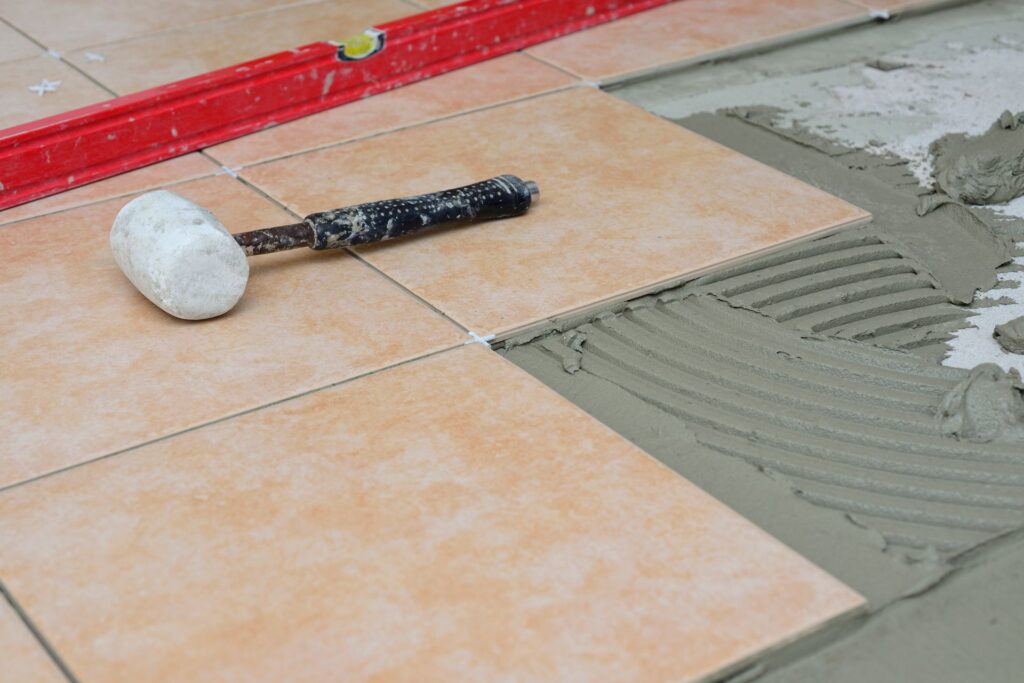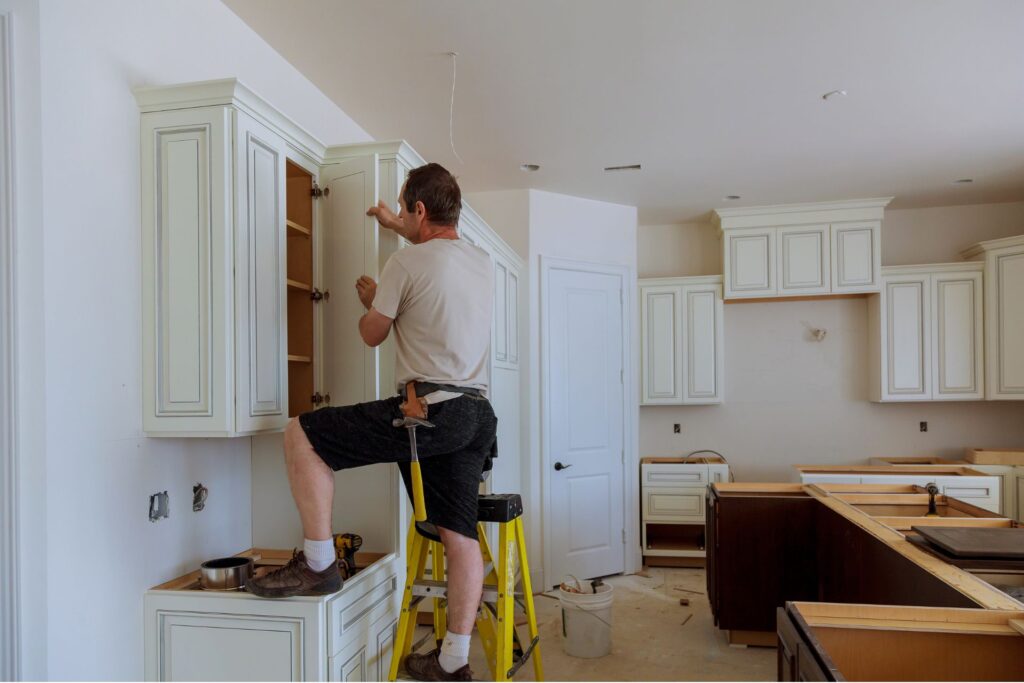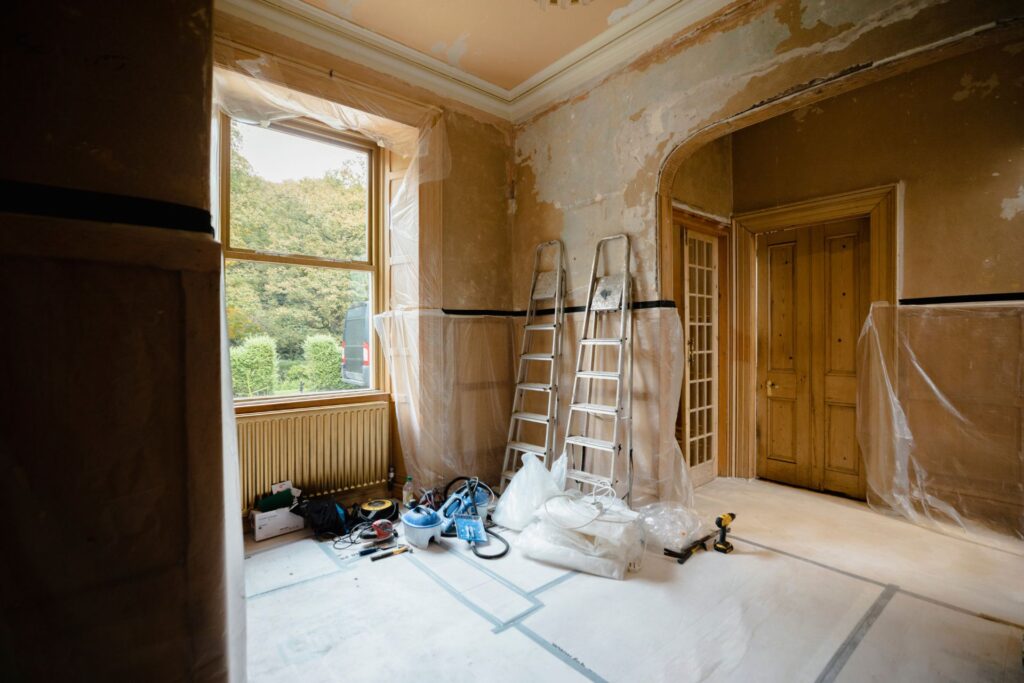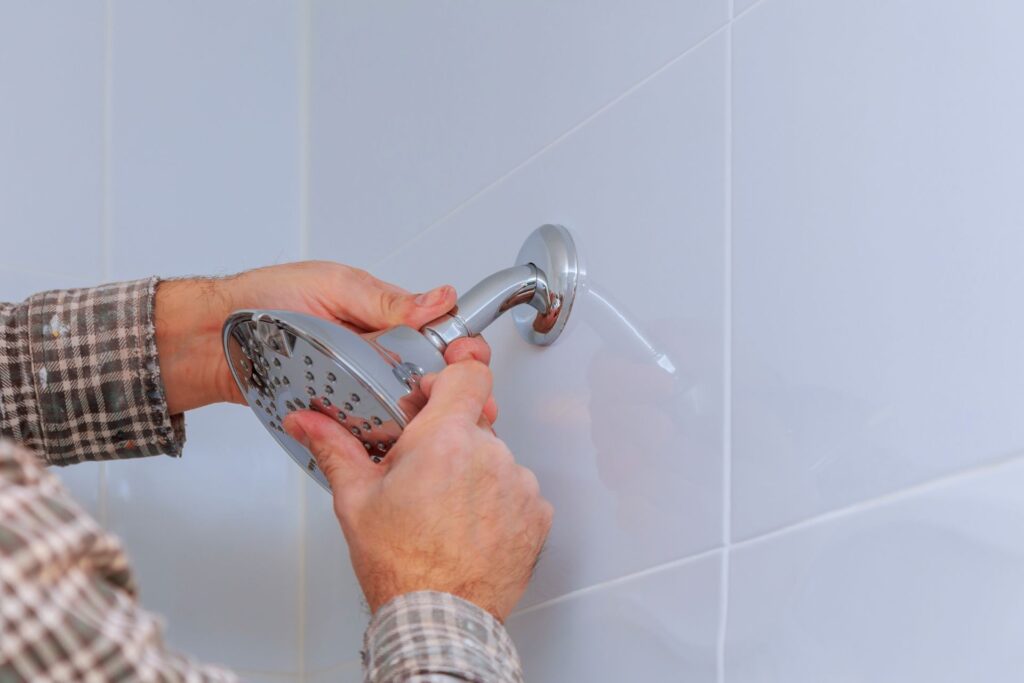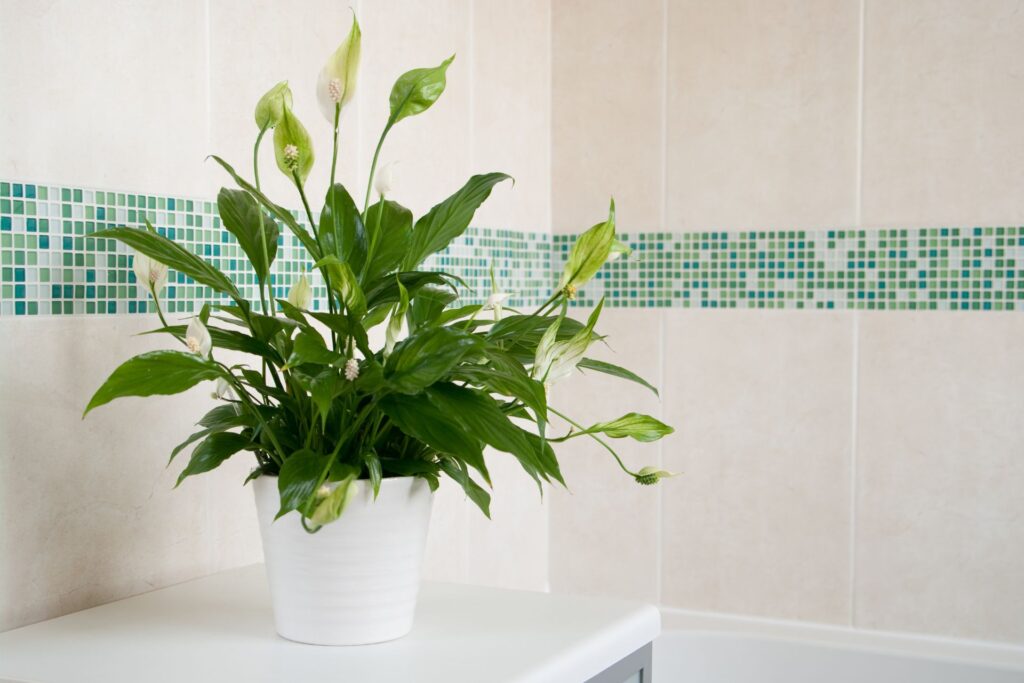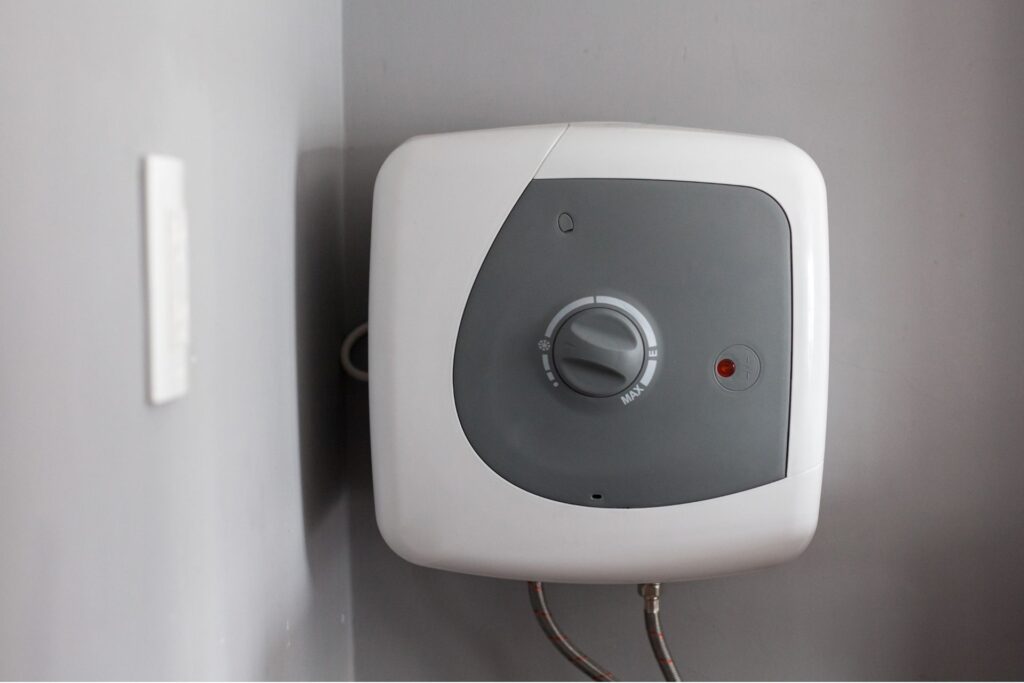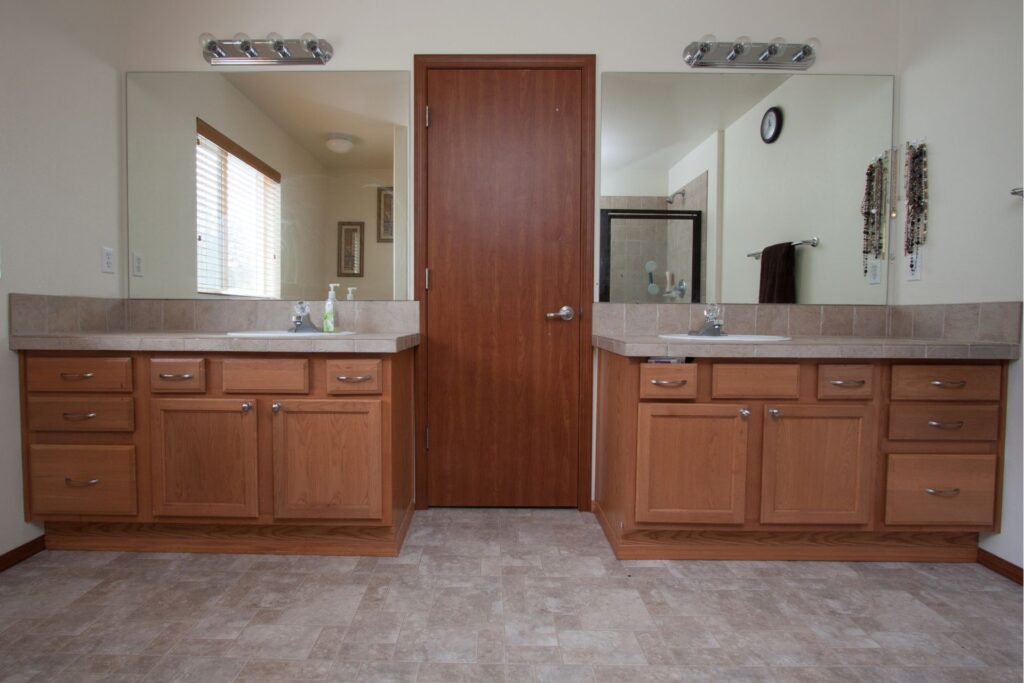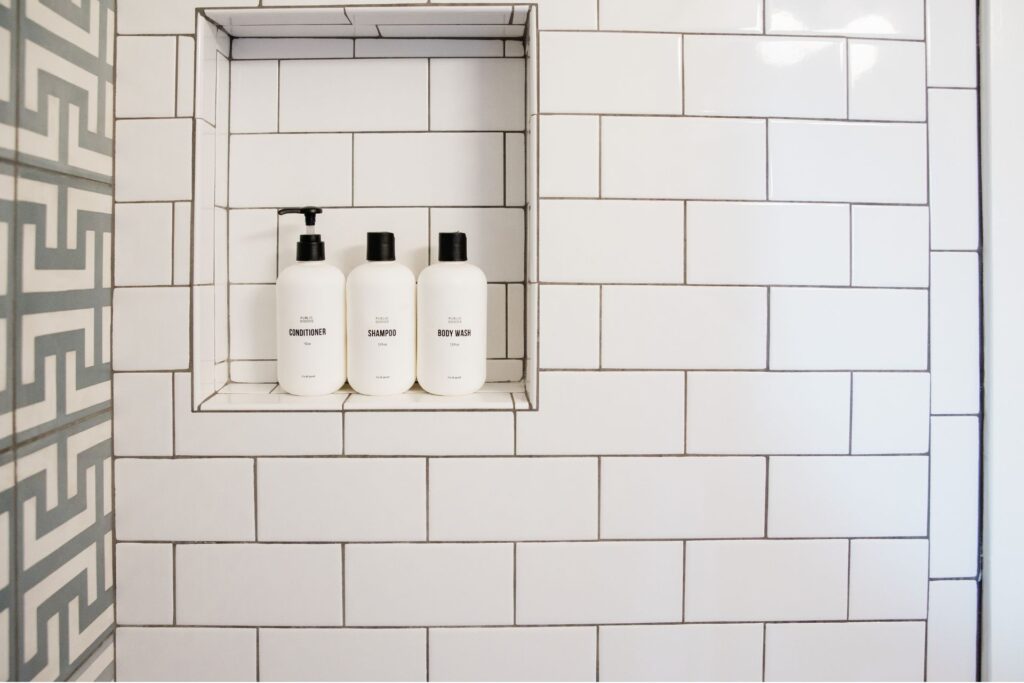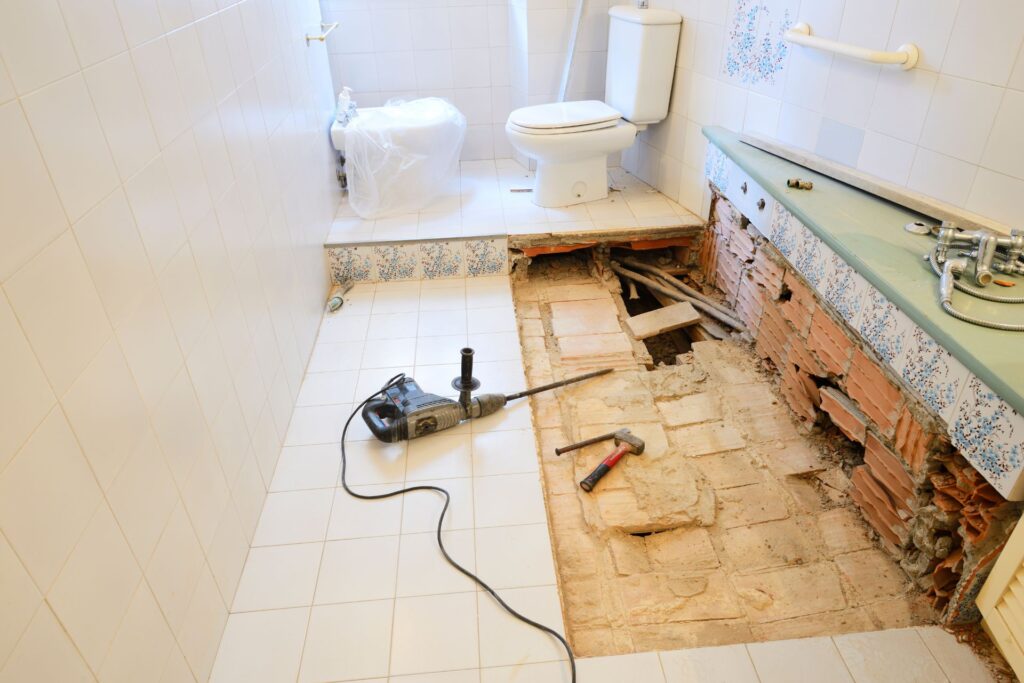Welcome to our comprehensive guide on the cost of bathroom tiling in New Zealand, where we explore everything you need to know to plan your renovation with confidence. Whether you’re refreshing an outdated space or completely reimagining your bathroom, understanding the various factors that influence tiling costs is essential to staying on budget. From the types of tiles available and regional labor rates to hidden expenses that can catch you off guard, this guide will help you navigate the process smoothly. By the end, you’ll be equipped with the knowledge to make informed decisions, ensuring your bathroom tiling project not only looks stunning but also delivers value for years to come.
On average, the cost of bathroom tiling in NZ ranges from $50 to $200 per square meter, influenced by factors like tile material, labor rates, and additional costs such as waterproofing and subfloor preparation. Ceramic tiles are typically the most affordable, while natural stone tiles are on the pricier side. For an accurate estimate, consider the size of your bathroom, the complexity of the project, and whether you choose DIY or professional installation.
Table of Contents
Overview Of Bathroom Tiling Costs In NZ
When planning a bathroom renovation, one of the most significant considerations is the cost of tiling. In New Zealand, bathroom tiling can vary greatly in price, influenced by several factors, from the type of tiles you choose to the region where you live. Let’s break down these costs to give you a clearer understanding of what to expect.
Average Cost Range
In New Zealand, the cost of bathroom tiling generally falls between $50 and $150 per square meter. This range covers the most common tile types, such as ceramic and porcelain, as well as the basic installation fees. However, it’s important to note that prices can fluctuate depending on your specific choices and circumstances. For instance, opting for high-end materials like natural stone or intricate mosaic designs could push costs beyond this range.
Factors Influencing Costs
Several key factors can influence the overall cost of bathroom tiling in New Zealand:
1. Tile Material: The material you choose plays a significant role in determining the cost. Ceramic tiles are often the most affordable option, while porcelain tiles are slightly more expensive due to their durability and water resistance. On the higher end, natural stone tiles like marble or travertine can significantly increase the budget.
2. Size of the Bathroom: Naturally, the size of the bathroom impacts the total cost. Larger bathrooms require more tiles and, consequently, more labor. Even small bathrooms can incur higher costs if you choose intricate patterns or premium materials.
3. Labor Costs: Labor is another substantial factor. The cost of professional tiling services can vary depending on the complexity of the job, the expertise of the tiler, and the region. In general, labor costs in metropolitan areas like Auckland tend to be higher than in smaller towns.
4. Regional Variations: Regional differences can also affect costs. For instance, tiling costs in the South Island may differ from those in the North Island due to variations in material availability, local labor rates, and demand.
Comparison with Other Countries
When comparing bathroom tiling costs in New Zealand with neighboring countries like Australia, the prices are relatively similar, though some differences exist. In Australia, the average cost per square meter can range from AUD $60 to $180, depending on the factors mentioned earlier. The slight difference in pricing often comes down to the cost of living, material availability, and labor rates in each country. However, for Kiwis, it’s essential to consider these costs in the context of the local market, as the availability of specific materials and regional preferences can lead to variations.
By understanding these factors, you can better plan and budget for your bathroom tiling project, ensuring that you get the best value for your investment. Whether you opt for a simple, cost-effective solution or a more luxurious finish, being informed about the potential costs will help you make decisions that align with your vision and budget.
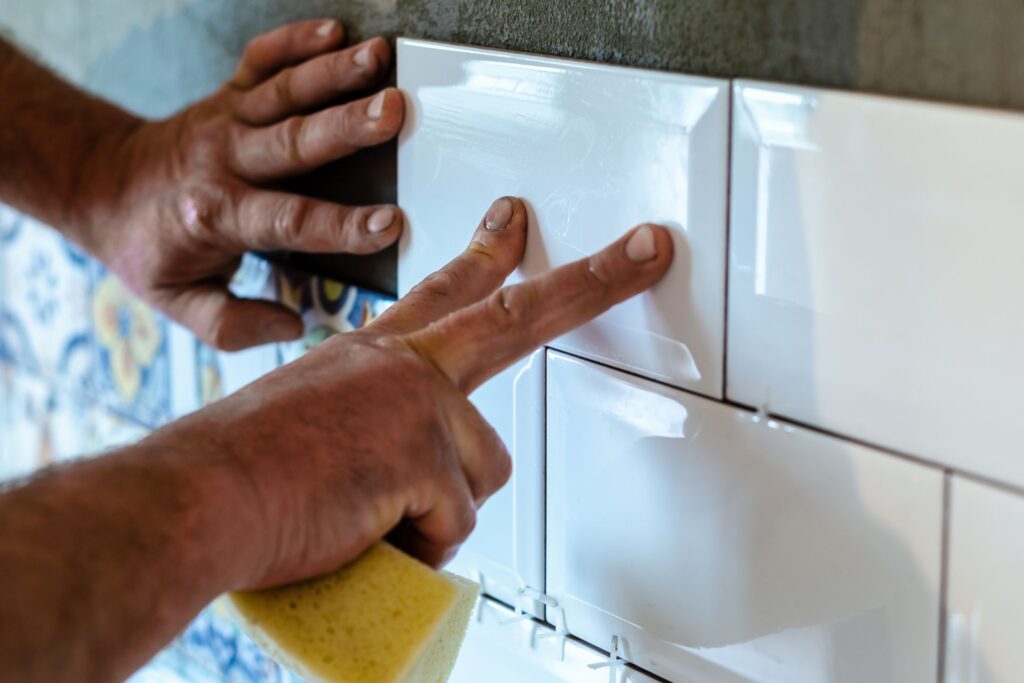
Breakdown Of Key Cost Factors
When planning a bathroom tiling project in New Zealand, understanding the breakdown of key cost factors is crucial to making informed decisions. This section will explore the primary elements that influence the overall cost, focusing on tile materials and prices, labor costs, and additional materials and supplies.
Tile Materials and Prices
Types of Tiles
The choice of tile material is one of the most significant factors affecting the cost of your bathroom tiling project. Common options include ceramic, porcelain, natural stone, and mosaic tiles, each offering unique characteristics:
- Ceramic Tiles: Widely used and budget-friendly, ceramic tiles are ideal for walls and floors. They come in various designs, making them a versatile choice for different bathroom styles.
- Porcelain Tiles: Known for their durability and water resistance, porcelain tiles are slightly more expensive than ceramic tiles. Their dense composition makes them suitable for high-traffic areas and wet environments.
- Natural Stone Tiles: Including options like marble, travertine, and slate, natural stone tiles add luxury and elegance to your bathroom. However, they come with a higher price tag and require more maintenance.
- Mosaic Tiles: These small, decorative tiles are often used to create intricate patterns or accent walls. While they can be pricey, their aesthetic appeal makes them a popular choice for feature areas.
Cost Differences
The cost of bathroom tiles in New Zealand varies depending on the material. Ceramic tiles can range from $30 to $80 per square meter, while porcelain tiles might cost between $50 and $120 per square meter. Natural stone tiles, due to their premium quality, typically start at $100 per square meter and can go up to $250 or more. Mosaic tiles vary widely, with prices ranging from $80 to $200 per square meter, depending on the complexity of the design.
Durability and Maintenance
When selecting tiles, it’s essential to consider long-term durability and maintenance requirements. Porcelain tiles, for example, are highly durable and require minimal upkeep, making them a cost-effective option over time. Natural stone tiles, though visually stunning, need regular sealing and maintenance to preserve their appearance. Balancing upfront costs with long-term value is key to choosing the right tile for your bathroom.
Labor Costs
Understanding Labor Charges in NZ
Labor costs are a significant portion of your tiling budget, and understanding how these charges are calculated can help you plan accordingly. In New Zealand, tilers typically charge either per hour or per square meter. The hourly rate for a professional tiler can range from $45 to $85, depending on experience and location. Alternatively, you may be quoted a rate per square meter, usually between $40 and $100, depending on the complexity of the job.
Regional Variations
Labor costs can vary significantly across different regions of New Zealand. For example, tiling costs in Auckland are generally higher than in Wellington or Christchurch, reflecting the cost of living and demand for services in these areas. In Auckland, expect to pay at the higher end of the scale, while in smaller towns or rural areas, labor might be more affordable.
DIY vs. Hiring a Professional
While DIY tiling can save on labor costs, it comes with its own set of risks. Mistakes made during installation can lead to costly repairs down the line, especially if waterproofing is compromised. Hiring a professional ensures a high-quality finish and adherence to building codes, reducing the risk of future issues. Weigh the cost savings of DIY against the potential risks before deciding which route to take.
Additional Materials and Supplies
Adhesives, Grouts, and Sealants
In addition to the tiles themselves, you’ll need to budget for essential supplies like adhesives, grouts, and sealants. Adhesives typically cost between $20 and $50 per bag, depending on the type and brand. Grout prices range from $10 to $40 per bag, and sealants can cost anywhere from $15 to $60, depending on the quality and purpose (e.g., anti-mold or flexible sealants).
Underlay and Waterproofing
Proper underlay and waterproofing are critical to the longevity of your bathroom tiles. Waterproofing, in particular, is a non-negotiable step in bathroom renovations to prevent leaks and water damage. The cost of waterproofing materials and installation can range from $500 to $1,500, depending on the size of the bathroom and the complexity of the work. Skimping on waterproofing can lead to significant problems down the line, so it’s worth investing in quality materials and professional installation.
By breaking down these key cost factors, you can better estimate the overall budget for your bathroom tiling project in New Zealand. Whether you’re opting for luxurious natural stone or sticking to cost-effective ceramic tiles, understanding the variables at play will help you make informed decisions and avoid unexpected expenses.

Hidden Costs And Common Pitfalls
When planning a bathroom tiling project, it’s easy to focus solely on the visual outcome and the upfront costs of materials and labor. However, there are often hidden costs and potential pitfalls that, if overlooked, can lead to significant headaches down the line. This section highlights some of the unexpected expenses you might encounter and common mistakes to avoid, ensuring your project stays on budget and on track.
Unexpected Costs
Even with careful planning, some costs can surprise you once the project is underway. Two of the most common culprits are subfloor preparation and structural issues.
Subfloor Preparation
Before laying new tiles, it’s crucial to ensure that the subfloor is in perfect condition. This often involves leveling, repairing, or even replacing the subfloor. If the subfloor is uneven or damaged, it can lead to cracked tiles or uneven surfaces, both of which are costly to fix after the fact. These extra steps can quickly add to your budget, particularly if the damage is extensive. While it might be tempting to skip this stage to save money, addressing subfloor issues upfront is essential for the longevity of your tiling project.
Structural Issues
Bathrooms are prone to moisture, making them more susceptible to structural problems like water damage, rot, and leaks. Discovering these issues mid-project can lead to unexpected delays and additional costs. For instance, if you find moisture damage under old tiles, you’ll need to repair the affected area before you can proceed with the new installation. These types of repairs can be expensive, especially if they require replacing parts of the flooring, walls, or even plumbing. It’s wise to budget for potential structural fixes when planning your tiling project, as they are often uncovered only once work begins.
Common Pitfalls
Beyond hidden costs, there are several common mistakes that can derail your bathroom tiling project. Being aware of these pitfalls can help you avoid costly errors.
Inaccurate Measurements
Accurate measurements are the backbone of any successful tiling project. Miscalculating the dimensions of your bathroom can lead to ordering too many or too few tiles. Not only does this mistake waste time and money, but it can also cause delays as you wait for additional materials or figure out what to do with excess tiles. Even a small measurement error can throw off your entire design, leading to gaps, uneven grout lines, or a need for more expensive adjustments. Always double-check your measurements and consider consulting with a professional to ensure accuracy.
Choosing the Wrong Tile Type
The tile you select should not only fit your aesthetic vision but also be suitable for the specific demands of a bathroom. Bathrooms require tiles that can withstand moisture, humidity, and frequent cleaning. Choosing a tile that isn’t suited for wet environments can result in higher maintenance costs over time, as well as the potential for mold, mildew, and other issues. For example, natural stone tiles may look stunning but often require sealing and special care, which adds to long-term costs. On the other hand, opting for a slip-resistant porcelain or ceramic tile can provide both durability and safety, making it a more practical choice for bathroom flooring.
By keeping these hidden costs and common pitfalls in mind, you can plan your bathroom tiling project with greater confidence. This foresight not only helps you manage your budget more effectively but also ensures that the finished space is as functional and beautiful as you envisioned.
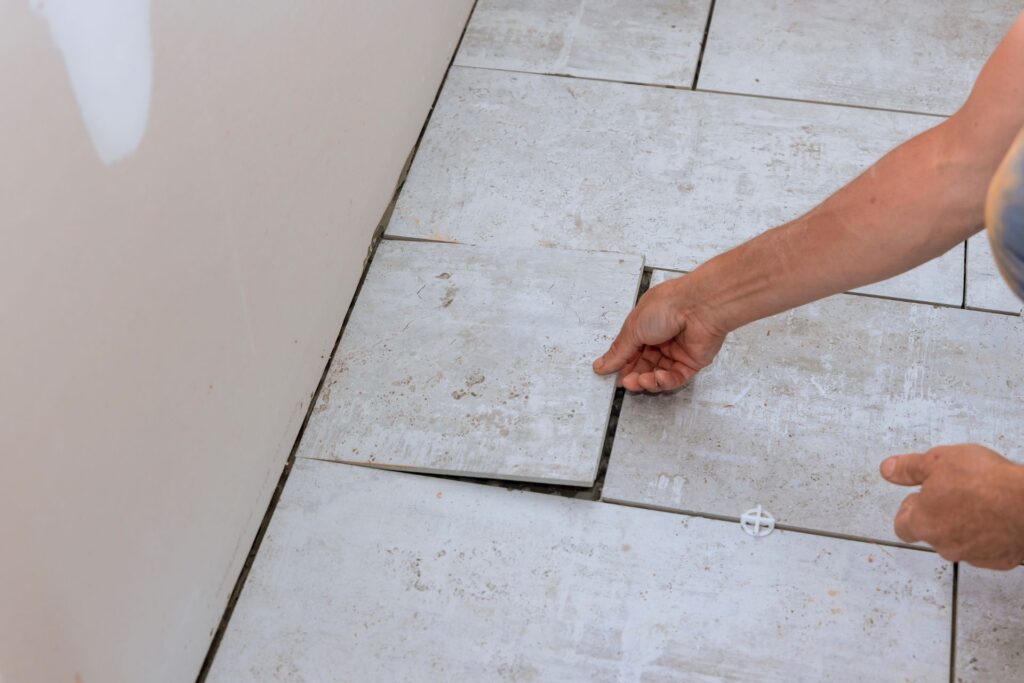
Tips To Save On Bathroom Tiling Costs
When it comes to tiling your bathroom, costs can quickly add up, especially if you’re not careful with your choices and planning. However, with a few smart strategies, you can achieve a stylish and functional bathroom without breaking the bank. Below are some practical tips to help you save on bathroom tiling costs while still getting the look you desire.
Smart Material Choices
- Budget-Friendly Tile Options: You don’t have to splurge on the most expensive tiles to create a beautiful bathroom. Many cost-effective alternatives mimic the appearance of high-end materials without the hefty price tag. For instance, porcelain tiles can resemble natural stone like marble or granite but are far more affordable. Similarly, ceramic tiles offer a wide variety of styles and colors, providing versatility at a lower cost. Choosing tiles that balance durability and design is key to maximizing your budget.
- Mixing and Matching: Another savvy way to save on tiling costs is by mixing and matching tiles. Instead of tiling the entire bathroom with expensive options, consider using pricier tiles as accents or feature walls. For example, you could use a bold, decorative tile for a small section of the shower or behind the vanity, while opting for more economical tiles on the floor and other areas. This approach not only reduces costs but also adds visual interest to the space, creating a custom look that feels luxurious without the luxury price.
DIY Tips
- Tiling Preparation: If you’re considering taking on the tiling job yourself, preparation is crucial. Start by thoroughly cleaning and leveling the surface to ensure the tiles adhere properly. It’s also essential to measure accurately and plan the tile layout beforehand to avoid unnecessary waste or cutting. Proper preparation can save you time, money, and frustration down the line. However, if you’re new to DIY tiling, begin with a small area like a backsplash to build confidence before tackling the entire bathroom.
- When to Hire a Pro: While DIY can save money, some tasks are best left to the professionals. Complex patterns, tricky corners, and waterproofing are areas where mistakes can be costly. Hiring a skilled tiler ensures the job is done right the first time, avoiding issues like uneven tiles, improper sealing, or water damage that could require expensive repairs. Knowing when to invest in professional help is critical to avoiding costly setbacks and ensuring a polished finish.
Planning and Budgeting
- Get Multiple Quotes: One of the simplest ways to manage costs is to get multiple quotes from different tilers. Prices can vary significantly between contractors, and by comparing several options, you can find the best value for your project. Be sure to ask for detailed quotes that break down labor, materials, and any additional fees. This will help you make an informed decision and avoid surprises later on.
- Plan for Contingencies: No matter how well you plan, unexpected expenses can arise. Whether it’s discovering water damage or needing extra materials, having a contingency budget can prevent stress and keep your project on track. Aim to set aside at least 10-15% of your total budget for these unforeseen costs. This cushion allows you to address any issues that come up without compromising the overall quality or completion of your bathroom renovation.
By following these tips, you can navigate the bathroom tiling process with confidence, making smart choices that keep costs in check while achieving a result you’ll love.
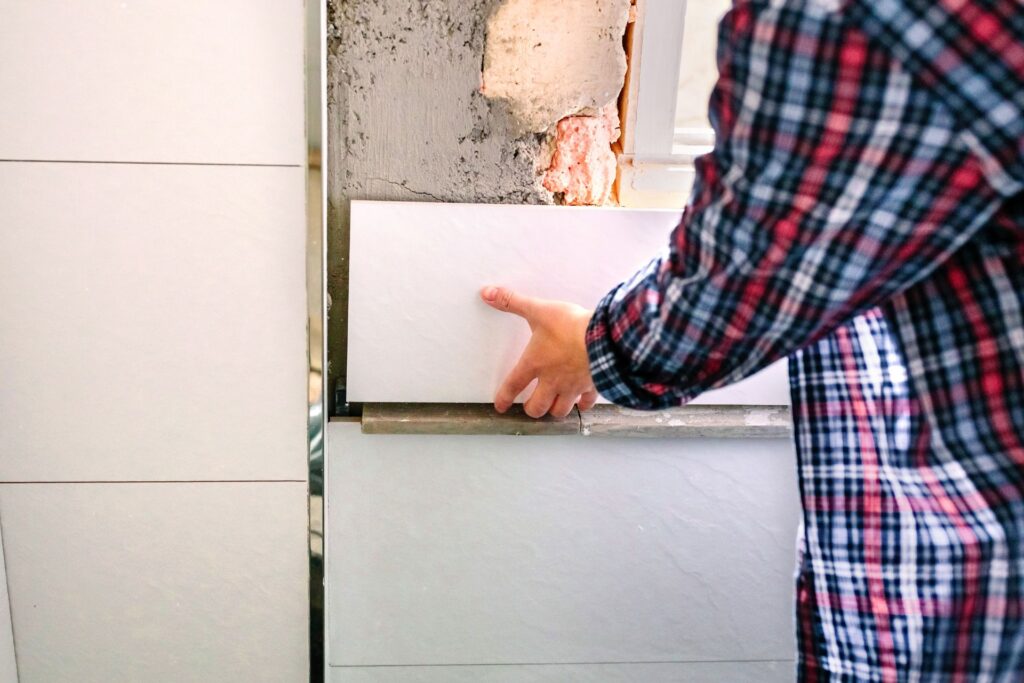
Case Studies And Real-Life Examples
When it comes to understanding the true cost of bathroom tiling in New Zealand, there’s no substitute for real-life examples. In this section, we’ll explore two distinct case studies that highlight the differences in cost, materials, and planning between a mid-range bathroom tiling project in Auckland and a luxury bathroom renovation in Wellington. These case studies offer valuable insights into what you can expect depending on your budget, location, and design preferences.
Case Study 1: Mid-Range Bathroom Tiling in Auckland
Our first case study features a family home in Auckland where the homeowners decided to upgrade their outdated bathroom. Their goal was to achieve a modern, functional space without breaking the bank. They chose mid-range tiles, which offered a good balance between cost and quality. The tiles were ceramic, known for their durability and ease of maintenance, priced at around $50 per square meter. The bathroom measured 10 square meters, making the total cost for tiles $500.
In addition to the tiles, the homeowners invested in quality grout and sealants, costing another $200. Labor was a significant expense, with professional tilers charging $70 per hour. The project took four days to complete, resulting in a labor cost of approximately $2,240. Other costs included minor plumbing adjustments and a new vanity unit, bringing the total renovation cost to $7,000.
Key Takeaways
- Tile Selection: Mid-range ceramic tiles provided a durable and cost-effective solution.
- Labor Costs: Hiring professionals ensured a high-quality finish, though it was a substantial portion of the budget.
- Overall Budget: With careful planning and material selection, the project remained within a reasonable budget for a mid-range renovation.
Case Study 2: Luxury Bathroom Renovation in Wellington
In contrast, our second case study involves a luxury bathroom renovation in a Wellington apartment. The homeowners aimed for a high-end look with premium materials and bespoke finishes. They opted for large-format porcelain tiles, which are popular for their sleek appearance and minimal grout lines. These tiles were imported from Italy and priced at $180 per square meter. The bathroom, measuring 15 square meters, required a total tile investment of $2,700.
Given the high-end nature of the project, the homeowners enlisted the help of a renowned interior designer who specialized in luxury spaces. The labor cost was considerably higher, with tilers charging $100 per hour due to the complexity of the work and the precision required. The tiling process took six days, resulting in a labor cost of $4,800. Additionally, the project included underfloor heating, custom cabinetry, and designer fixtures, bringing the total renovation cost to $30,000.
Key Takeaways
- Material Selection: Premium materials, like imported porcelain tiles, significantly elevate the look but come with a higher price tag.
- Labor and Expertise: Engaging skilled professionals and designers ensures a luxurious finish but increases costs.
- Investment: While the upfront costs are high, luxury renovations can significantly enhance property value.
Lessons Learned
These case studies illustrate the wide range of costs associated with bathroom tiling in New Zealand, depending on the scale of the project and the materials chosen. For those working with a mid-range budget, it’s crucial to focus on balancing quality with cost-effective choices. Opting for reliable materials like ceramic tiles and working with skilled but reasonably priced tradespeople can result in a beautiful bathroom without overspending.
On the other hand, if you’re aiming for a luxury finish, be prepared for a substantial investment. Premium materials, custom designs, and expert labor drive up costs, but they also deliver a distinctive, high-end aesthetic that can add significant value to your home.
In both scenarios, careful planning and budgeting are essential. By understanding the potential costs and learning from real-life examples, you can make informed decisions that align with your vision and financial constraints.

Maximizing The Return On Investment (ROI)
Impact of Quality Tiling on Home Value
When it comes to home improvements, bathroom renovations are often at the top of the list for adding value. High-quality bathroom tiling, in particular, can significantly enhance your property’s appeal and market value. The bathroom is one of the most scrutinized spaces by potential buyers, and the condition of the tiling speaks volumes about the overall care and quality of the home. Investing in premium tiles, whether they are ceramic, porcelain, or natural stone, not only improves the aesthetic but also suggests durability and a lower likelihood of future maintenance. Buyers are often willing to pay a premium for homes that require little to no immediate renovation, making quality tiling a worthwhile investment.
Beyond just the visual appeal, the functional benefits of high-quality tiling, such as water resistance and ease of cleaning, also play a crucial role in enhancing the home’s value. A beautifully tiled bathroom, with well-chosen grout and meticulous installation, creates a sense of luxury that can sway potential buyers, giving your home an edge in a competitive market.
Trends in Bathroom Design
Staying current with bathroom design trends can also help maximize your ROI. Trends today lean toward a balance between style, functionality, and cost. For example, large-format tiles are becoming increasingly popular due to their ability to make small spaces appear larger and reduce the number of grout lines, which means less maintenance. Neutral tones like soft grays, beiges, and whites are in vogue as they create a timeless look that appeals to a broad audience. Incorporating natural textures, such as stone or wood-look tiles, can add warmth and a sense of tranquility to the space.
Another trend gaining traction is the use of patterned tiles, particularly in feature areas like shower niches or accent walls. These offer a way to introduce personality and flair without overwhelming the space. By carefully selecting design trends that are stylish yet timeless, you can ensure that your bathroom remains appealing for years to come, protecting your investment and making it more attractive to potential buyers.
Sustainability
Eco-friendly bathroom tiling options are not just a trend—they are a smart investment for the future. As more homeowners prioritize sustainability, choosing environmentally responsible materials can boost your home’s appeal. Tiles made from recycled materials, such as glass or ceramic, are not only beautiful but also contribute to reducing your carbon footprint. Additionally, these sustainable tiles are often just as durable and aesthetically pleasing as their traditional counterparts.
The long-term benefits of eco-friendly tiling extend beyond the environment. Energy-efficient tiles, like those that help with insulation, can reduce heating costs, adding another layer of value. Furthermore, using low-VOC (volatile organic compounds) adhesives and sealants ensures better indoor air quality, a factor increasingly considered by health-conscious buyers. By choosing sustainable tiling, you’re not only enhancing your home’s value but also contributing to a healthier planet.
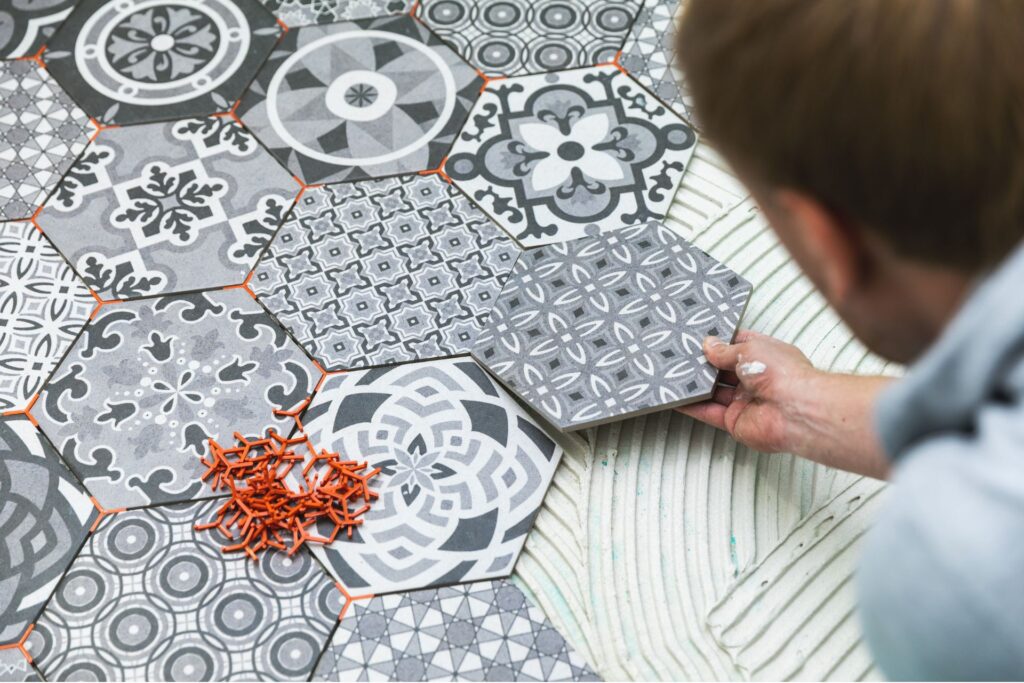
FAQs: About Cost Of Bathroom Tiling NZ
What is the average cost of tiling a bathroom in New Zealand?
On average, tiling a bathroom in New Zealand costs between $50 and $200 per square meter. The total cost can vary depending on factors such as the type of tiles chosen, labor rates, and any additional work required like waterproofing or subfloor preparation.
What types of tiles are most commonly used in New Zealand bathrooms?
The most common tiles used in New Zealand bathrooms include ceramic, porcelain, natural stone, and mosaic tiles. Ceramic tiles are popular due to their affordability, while porcelain and natural stone are favored for their durability and premium look.
How much does labor typically cost for bathroom tiling in NZ?
Labor costs for bathroom tiling in New Zealand typically range from $40 to $100 per hour, depending on the region and the complexity of the job. Some tilers may charge per square meter, with rates ranging from $60 to $120 per square meter.
Are there regional differences in bathroom tiling costs within New Zealand?
Yes, there are regional differences. Tiling costs tend to be higher in major cities like Auckland and Wellington due to higher labor rates. Smaller towns or rural areas may have lower costs, but availability of specialized tiles or professionals might be limited.
Can I save money by tiling the bathroom myself?
DIY tiling can save on labor costs, but it’s important to consider your skill level and the complexity of the job. Mistakes in tiling can be costly to fix, so if you’re unsure, it’s often better to hire a professional to ensure a high-quality finish.
What are the hidden costs associated with bathroom tiling?
Hidden costs can include subfloor preparation, waterproofing, and structural repairs if existing issues like rot or moisture damage are found. It’s essential to plan for these potential expenses to avoid budget overruns.
How can I reduce the cost of bathroom tiling without compromising on quality?
To reduce costs, consider using a mix of premium and budget-friendly tiles, choosing larger tiles to reduce installation time, and obtaining multiple quotes from tilers. You can also look for sales or discounts on tiles and materials.
How long does bathroom tiling take to complete?
The time required to tile a bathroom can vary, but it generally takes between 3 to 7 days. This includes time for surface preparation, tile installation, grouting, and curing. Larger or more complex projects may take longer.
Is waterproofing necessary when tiling a bathroom?
Yes, waterproofing is essential when tiling a bathroom, especially in wet areas like showers. It prevents water damage, mold growth, and structural issues. Skipping waterproofing can lead to costly repairs down the line.
How does bathroom tiling affect the resale value of my home?
High-quality bathroom tiling can significantly boost your home’s resale value. Modern, well-installed tiles are attractive to buyers and can increase the overall appeal of your property, offering a good return on investment.
Conclusion
In wrapping up, it’s important to remember that bathroom tiling costs in New Zealand are influenced by several key factors, including tile material, labor, and unexpected expenses like subfloor preparation. To ensure your project remains within budget without compromising on quality, careful planning is essential. By thoughtfully selecting materials, considering both DIY and professional options, and allowing for contingencies, you can achieve a balance between aesthetics and cost. For those seeking further guidance, exploring additional resources, obtaining quotes from professionals, or consulting with a tiling expert can provide personalized insights tailored to your specific needs.
About the Author:
Mike Veail is a recognized digital marketing expert with over 6 years of experience in helping tradespeople and small businesses thrive online. A former quantity surveyor, Mike combines deep industry knowledge with hands-on expertise in SEO and Google Ads. His marketing strategies are tailored to the specific needs of the trades sector, helping businesses increase visibility and generate more leads through proven, ethical methods.
Mike has successfully partnered with numerous companies, establishing a track record of delivering measurable results. His work has been featured across various platforms that showcase his expertise in lead generation and online marketing for the trades sector.
Learn more about Mike's experience and services at https://theleadguy.online or follow him on social media:
